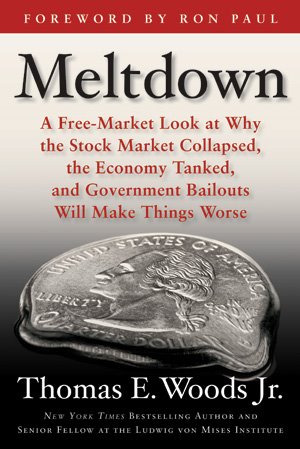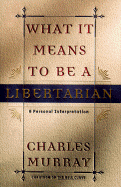Income Mobility
Mark Perry of the American Enterprise Institute has analyzed the recent research from the Federal Reserve Bank of Minneapolis. The summarized table below is based on income data from the Panel Study of Income Dynamics that followed the same households from 2001 to 2007.The bottom row in the chart shows that for households in the second, middle, and fourth income quintiles in 2001, more than half of each group moved to a different earnings quintile by 2007 (61 percent, 58 percent, and 55 percent, respectively)
- Here we can see that from 2001 to 2007, 44% of the lowest 20% had moved up, mostly to the second lowest quintile but there are also signs of moving further in that short time.
- Of the highest 20% earners, only 66% remained in their position while 34% had moved down the income ladder.
- For the middle 20% of income earners, 58% had moved either up or down from their quintile.
The point of this data here is that income mobility was actually changing more than what many would expect, and in a short time frame. It shows that income mobility goes both ways in a dynamic US labor market: upward and downward.
Professor Steven Hortiwz does an excellent job of explaining the dynamics of income mobility. It is worth the 3 minutes.
Additional reading:
Income Mobility and the Persistence Of Millionaires, 1999 to 2007.
Markets and the Economic Condition of the Poor
Facts on the Distributions of Earnings,Income, and Wealth in the United States:2007 Update
Income Inequality
According to Political Calculations, the most common measure of income inequality in a nation is the Gini Coefficient. "0" represents absolute equality and "1" represents absolute inequality. Contrary to popular opinion, below you can see that the trend in income inequality from 1994 to 2010 has leveled off. This information is the Gini Coefficient for the U.S. population based on the 2010 U.S. Census.The following graph shows the Income Dispersion for U.S. households and families from 1967 to 2010. According to Professor Mark Perry,
According to three different Census Bureau measures, income inequality in America increased only gradually from the 1960s through the mid-1990s, but since then has remained relatively constant. Therefore, the factual record of income data in the United States certainly doesn’t support the claims that income inequality has “exploded” recently. A more accurate description of income inequality over the last several decades would be to say that it “flat-lined” starting in about 1994.
Additional reading:
Three Contemporary Economic Myths About Income and Material Well Being
Thinking Clearly about Economic Inequality
Thinking Clearly about Economic Inequality
Income Inequality and Demographics
It is important to not only look at relative inequality but to determine the differences between high-income households from low-income households.
Professor Mark Perry summarizes some of the main points in the graph above:
- On average, there were significantly more income earners per household in the top income quintile households (1.97) than earners per household in the lowest-income households (0.43).2.
- Married-couple households represented a much greater share of the top income quintile (78.4 percent) than for the bottom income quintile (17 percent), and single-parent or single households represented a much greater share of the bottom quintile (83 percent) than for the top quintile (21.6 percent).3.
- Roughly 3 out of 4 households in the top income quintile included individuals in their prime earning years between the ages of 35-64, compared to only 43.6 percent of household members in the bottom fifth who were in that age group.4.
- Compared to members of the top income quintile, household members in the bottom income quintile were 1.6 times more likely to be in the youngest age group (under 35 years), and three times more likely to be in the oldest age group (65 years and over).5.
- More than four times as many top quintile households included at least one adult who was working full-time in 2010 (77.2 percent) compared to the bottom income quintile (only 17.4 percent), and more than five times as many households in the bottom quintile included adults who did not work at all (68.2 percent) compared to top quintile households whose family members did not work (13.3 percent).6.
- Family members of households in the top income quintile were about five times more likely to have a college degree (60.3 percent) than members of households in the bottom income quintile (only 12.1 percent). In contrast, family members of the lowest income quintile were 12 times more likely than those in the top income quintile to have less than a high school degree in 2010 (26.7 percent vs. 2.2 percent).
One would expect that households with more people earning income would be in a higher quintile than those with fewer income earners. Education, age, employment duration (full-time, part-time, or not working), and marital status are seen to be additional factors for this inequality. This should not be much of a surprise.
The cost and standard of Living
Steven Horwitz writes:
The ultimate measure of the cost of consumption goods is the labor time needed to purchase them. A pair of pants might cost $20, but if the average industrial wage is $2/hr then those are more "expensive" than if the average industrial wage is $10/hr. Five times more expensive, we might add. When looked at this way, the real cost of living has dropped significantly and consistently over the course of the century and the last few decades.
Examples of prices of various inflation-adjusted goods relative to year are here, here, and HERE. This shows that the cost of living has decreased in many important ways relative to the past, and that our general standard of living has increased. In fact, as society has grown wealthier, the poor have been able to obtain goods that they rarely had access to in the past. For example, in 1984 only 42.5% of the poor had an A/C unit, but in 2005 that grew to almost 86%. These units are not just for luxury either, they can help save lives from extreme conditions.
From an article by Michael Tanner of the Cato Institute, he says that "data just released by the Tax Foundation, the top 1 percent of the wealthiest Americans earned 16.9 percent of all adjusted gross income in the United States. While no doubt that's a lot of money, it actually represents a decline from 2008, when the rich earned 20 percent of all income."
The October 2011 Tax Foundation study includes charts on the AGI earned and income taxes paid:
The following chart compares 1980 income earned and federal taxes paid versus 2009 Income earned and Federal income taxes paid based on the information above from the Tax Foundation (I just whipped this up).
Here we can see that the Top 1% AGI was 8.46% in 1980 and 19.05% in 2009 whereas the Federal Income taxes paid was 19.05% and 36.76%, respectively. Regarding the top 0.1%, the Tax Foundation says:
The study also takes a look at the very highest earners, the top 0.1 percent of tax returns, which the IRS only began singling out in recent years. In 2009, those 138,000 tax returns accounted for nearly 7.8% of adjusted gross income earned (down from almost 10% in 2008), and they paid around 17% of the nation's federal individual income taxes (down from 18.5% percent in 2008)."The bottom 50% had a total AGI of 17.68% in 1980 and 13.48% in 2009. The bottom 50% as a group did see less overall income as a percentage of the total but their income tax burden went from 7.05% in 1980 down to 2.25% in 2009. So while they are making almost 24% less in adjusted gross income, they are paying 68% less in Federal income taxes as of 2009.
The very highest income group—the top one-tenth of one percent—actually has a lower average effective income tax rate than the rest of the top 1 percent of returns because these extremely high-income returns are more likely to have income from capital gains and dividends, which are typically taxed at lower rates," said Logan. "It's worth pointing out that in the case of capital gains and dividends, however, income derived from these sources has already been taxed once by the corporate income tax, which is not included in the current study, meaning the average effective tax rate numbers can be somewhat misleading."
Tax Revenues
Raising taxes if often thought of as a way to provide greater revenue but as Hauser's Law demonstrates, the following chart shows that there has been almost no correlation between the top marginal tax rate on individuals and total federal revenue as a percentage of GDP. Hauser says, "Tax revenues as a share of GDP have averaged just under 19%, whether tax rates are cut or raised. Better to cut rates and get 19% of a larger pie."Date sources: top marginal rates from the IRS, Historical Table 23, federal revenue 1930-2002 from US Statistical Abstract, Historical Statistics, federal revenue 2003-07 from US Statistical Abstract, Table 451.
The following site has more charts than you probably need but it includes more data on total tax revenues including, state, local, property, business, and social taxes.
THE TRUTH ABOUT TAXES: Here's How High Today's Rates Really Are








































